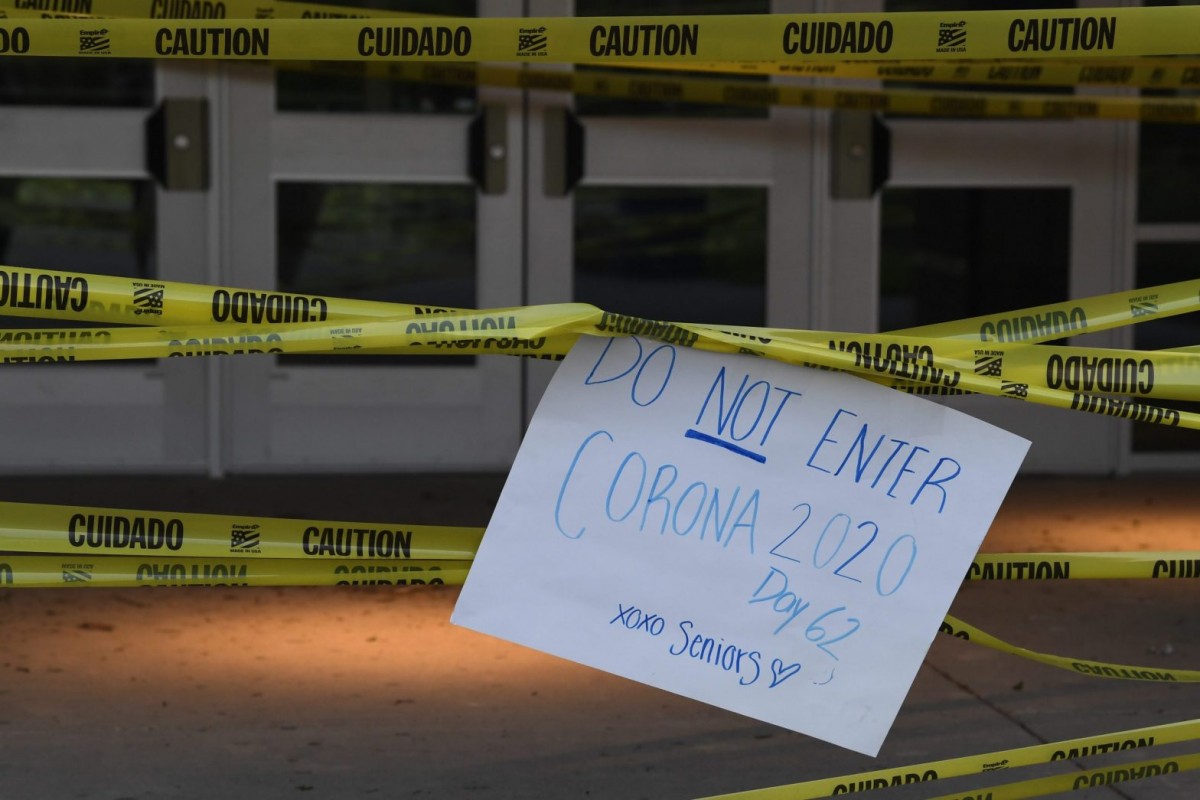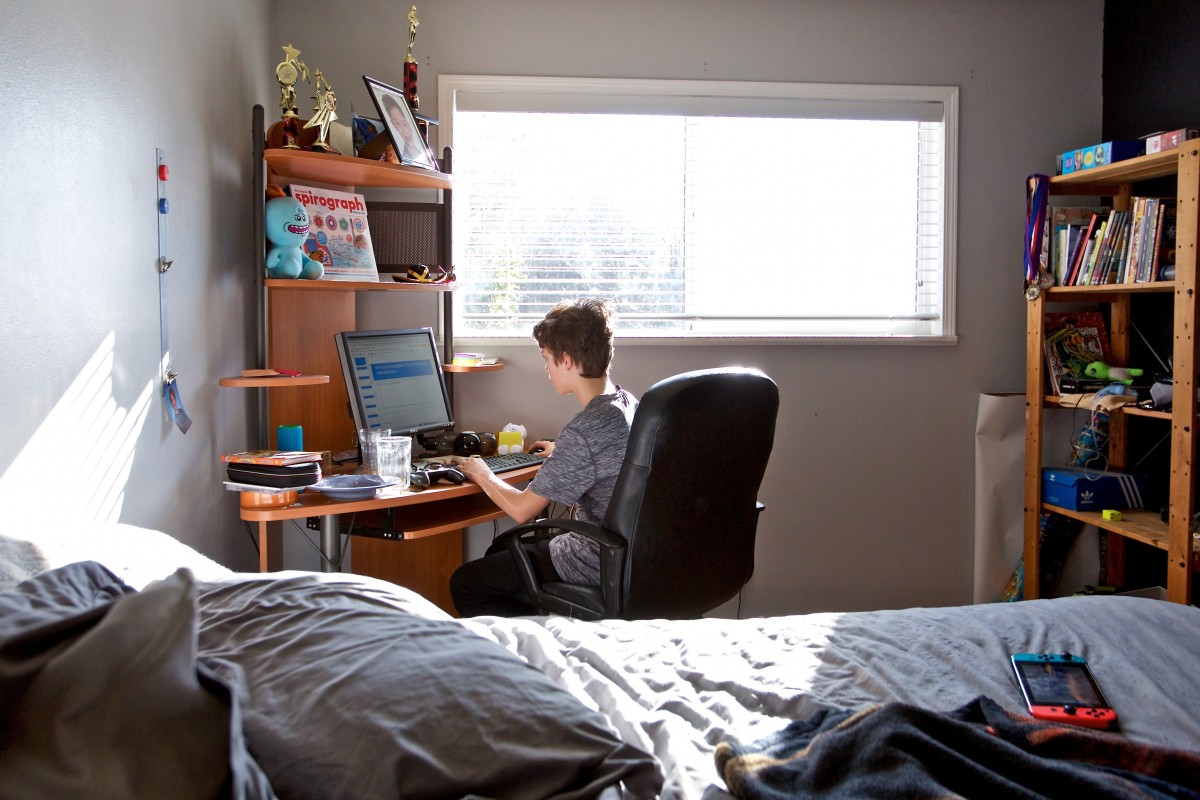Like other university researchers, the pandemic forced Isabel Escobar to shut down her lab instead of returning from spring break earlier this year.
Escobar has a Ph.D. in Environmental Engineering is a professor of chemical and materials engineering in the University of Kentucky’s College of Engineering and is the associate director of UK’s Center of Membrane Sciences. While home self-isolating with her husband and five-year-old daughter, she watched with the rest of the world as COVID-19 dominated the news and encroached on her community.
“I started thinking a lot about masks,” Escobar said, “especially in the beginning when N95 masks were not available.”
It was a problem that weighed on a lot of minds, but the difference for Escobar is that she has expertise in water filtration. She also has expertise in anti-microbial substances. She’s worked in these fields for nearly a decade.
“I was telling myself in the back of my mind, ‘If you don’t figure out a way to help, you’re not a good person.’”
Escobar began looking through mask designs in more detail during April and May. Learning how they were tested and considering what filter she might be able make. While there are many coronaviruses, some are more worrisome than others. The one wreaking havoc in the world right now is called SARS-CoV, which causes COVID-19.
“The [SARS-CoV-2] virus is about 120 nanometers in size — in the world of membranes, that’s large,” Escobar said. “But it also comes in mucous, so it makes it that much larger, and I have filters that can absolutely filter that out.”
N95 masks filter out airborne particles to protect the person wearing it. Escobar wanted to take this mask technology one step further by adding silver nanoparticles (AgNPs). Silver nanoparticles are well known for their antiviral capabilities and are already used in products like wound dressings. However, problematic leaching of the nanoparticles – meaning the particles actually drain away over time – has prevented their widespread use, especially in filtration.
Escobar wanted to provide “passive disinfection” in a mask. She explained that “the presence of silver nanoparticles provides a secondary barrier in the form of inactivation of any viruses that accumulate on a mask.” Simply put, silver nanoparticles target and inactivate all viruses and bacteria, including the virus that causes COVID-19.
Just last year, the University of Kentucky research group Escobar worked with developed a solution to attach silver nanoparticles so that they never come off, to polymer filters, which are used to filter water. So, Escobar had created a brand new technology in filtering pathogens out of water. It just needed to be applied to filtering air instead of water.
For most of April and May, Escobar sifted through her knowledge bank, thinking about how she could apply what she knew to the current crisis at hand. Her stumbling block? How to make the filter practical for individual use.
“I would always stumble because the filters don’t have a strong enough support.”
The filters themselves are very thin, very malleable. In order to take this technology and translate it to a face mask – the most effective way to stop the spread of the virus that we know so far – Escobar needed to find a way to keep these delicate materials from ripping or from being so flexible they would breath in and out of a person’s mouth during use.
“I would always get to that point and absolutely, 100 percent, stumble.”
Making the Connection
Isabel Escobar was recruited to UK via a startup support package from Kentucky’s National Science Foundation-sponsored Established Program to Stimulate Competitive Research (EPSCoR). It was this five-year program with a bioeconomy focus that helped Escobar produce the silver nanoparticle innovation.
During an email thread with EPSCoR, Escobar mentioned she was working on a mask filter and asked if they knew anyone providing funding. She explained her stumbling blocks and said she received, “Huh, let me get back to you,” in response.
What Escobar didn’t know was that her solution lay in KY-NSF-EPSCoR’s second five-year funding cycle that supported industry development happening just 80-miles south in Somerset, Kentucky.
“EPSCoR is a unique program in that it is focused on building research competitiveness within the state,” said Rodney Andrews, EPSCoR’s program director. And while it is a specific program, Andrews said, “what you use the funds for can be very different from a typical research grant.”
EPSCoR was working with Somerset Community College under their “Workforce Development” portion of EPSCoR’s Research Infrastructure Improvement Track (KAMPERS) program with the intention of bolstering a trained workforce.
“It allows us to go forward with that multiplier effect,” Andrews said.
EPSCoR provided funding for newer equipment at SCC, which offers Kentucky its first-ever college certificate in 3D Printing, also known as Additive Manufacturing.
Somerset Community College Steps Up
Let’s rewind to the end of spring break. Somerset Community College professor Eric Wooldridge, aka “the Additive Guru,” was in his 3D-printing lab for about three days before the pandemic shut him down.
He watched COVID-19 swell in Europe and because of his role on the additives board for the American Society for Testing and Materials, he was already seeing signs from Europe that 3D-printing was one way to address PPE shortages.
Then his school shut down and Wooldridge had to go home.
“We didn’t have permission to stay in the lab after that Wednesday [in mid-March],” he said. Over that following weekend, Wooldridge continued to see a big push for using low-cost 3D printing to produce face shields and PPE. Then on Monday morning, SCC got a request from Governor Andy Beshear’s office asking them for help.
Wooldridge was granted permission to go back into the building Tuesday morning to start working on PPE solutions.
“I started packing and left my house around 4 in the morning,” he said. “I knew I was going to be in the lab the rest of the week.”
Wooldridge lives 40 minutes from campus, so he eliminated the commute. He camped out in the lab on an air mattress and began producing face shields around the clock.
“I would just wake up, hit reset, and go back to sleep,” he said.
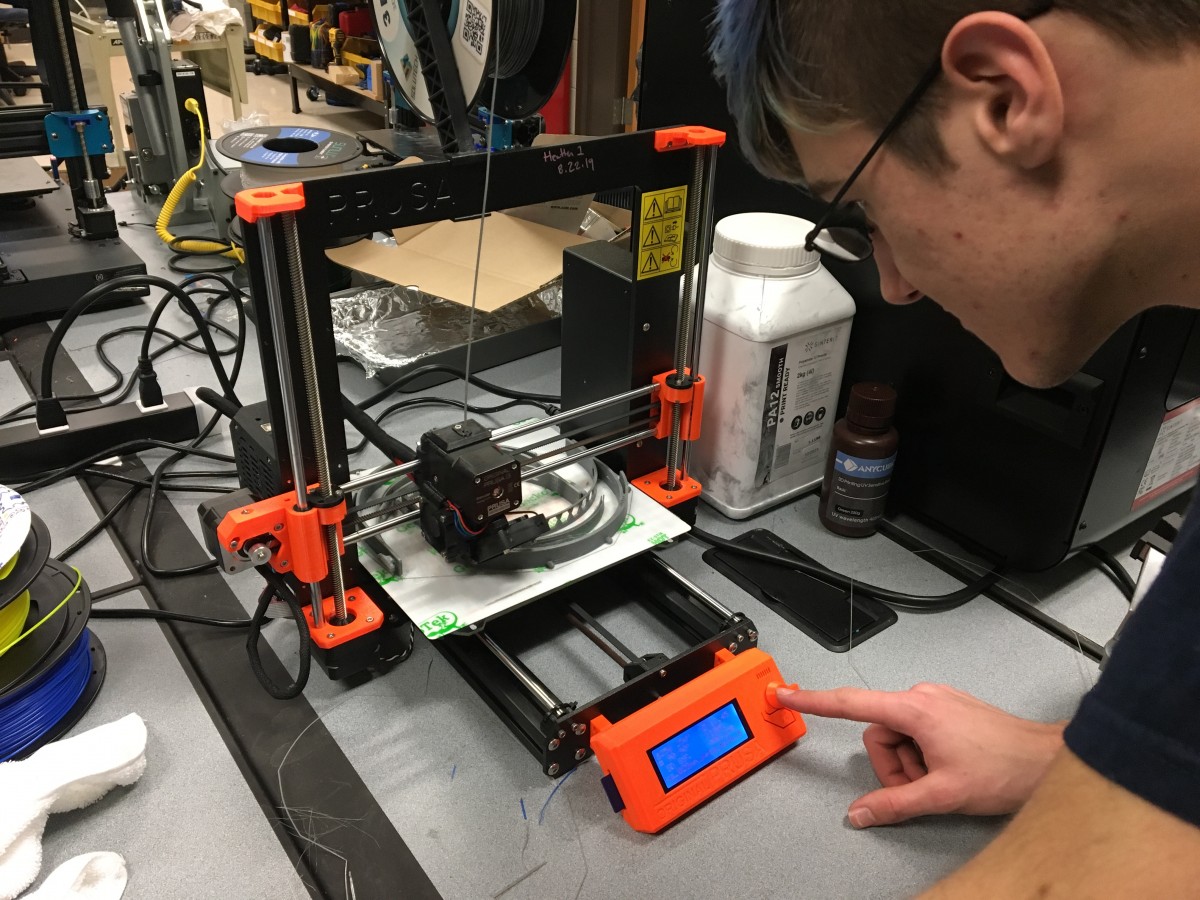
He soon brought in technicians to help while adhering to social distancing protocol and he went home on the weekends while another staff member managed production. They produced 200-300 face shields per day.
The University of Kentucky Cooperative Extension Service staff met weekly to assemble the week’s worth of production. And community members responded to social media requests for supplies.
“They are the unsung heros in all of this,” Wooldridge said. “We were able to manufacture, but finding and sourcing the materials, getting the assembly done — that was the real challenge.”
KY-NSF-EPSCoR was supportive every step of the way. From the very beginning, NSF encouraged EPSCoR to do what they could to help with the pandemic within the scope of their program.
“That pivot to be able to help with PPE was actually very easy because it was basically taking what they were supposed to be doing in terms of having students learn additive techniques, to actually doing it and filling a very real need,” Andrews said.
The Collaboration
After they told Escobar, “Huh, let me get back with you,” they got back to her, “in less than a half an hour,” she said.
EPSCoR introduced her to Eric Wooldridge with interest in funding the whole project.
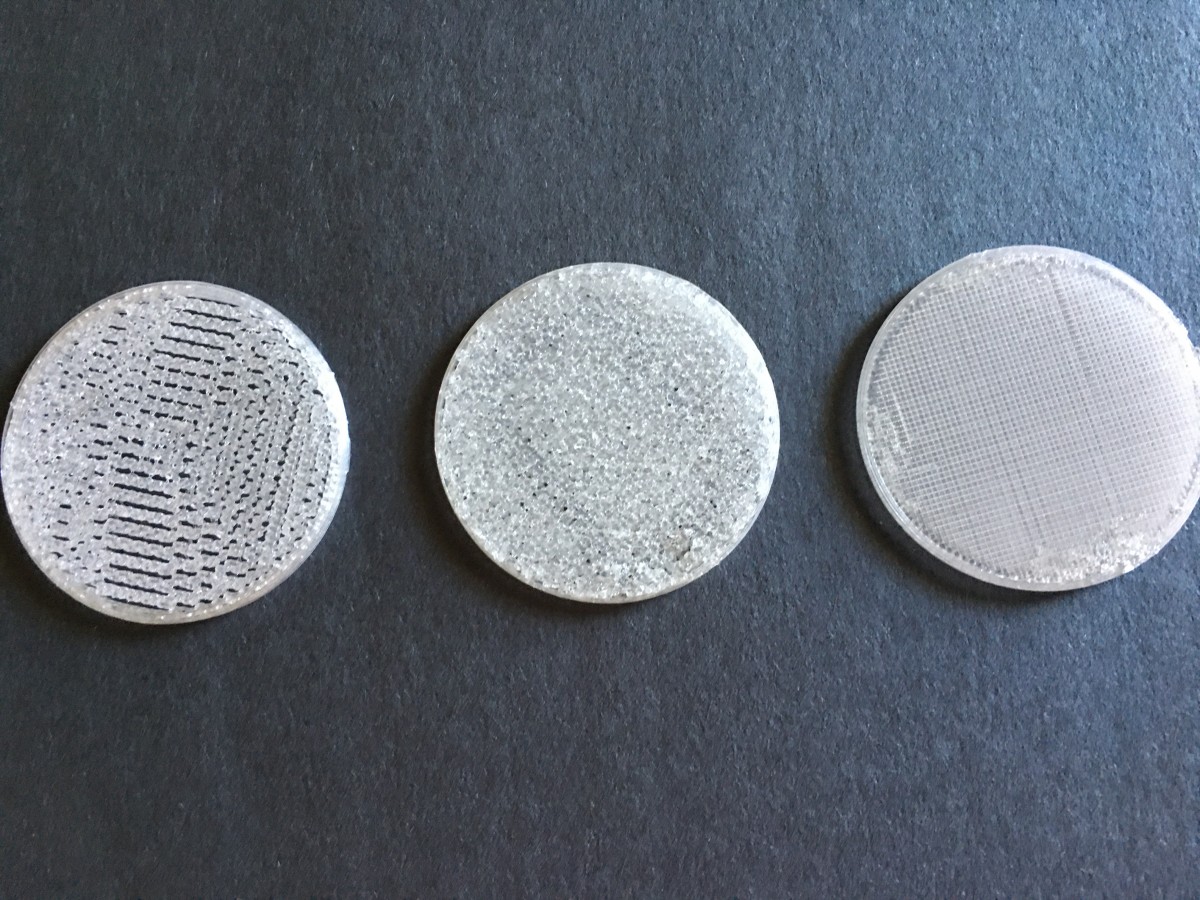
Connecting with Wooldrige was “one of those email exchanges where the level of excitement keeps going up,” Escobar said.
“I can totally attest to the same thing from my side,” Wooldridge said. “I was thinking, oh yeah, we can do this. It wasn’t going to be a problem at all and I was super excited.”
Wooldridge designed and printed the support for Escobar’s filter in less than 24 hours.
“I don’t want to make it sound like something that great — it’s just a disc.” he said. “The trick is not so much the design, the trick is the settings on the printer.”
The disc Wooldridge developed to support Escobar’s delicate air filter needed to be porous enough to allow the airflow, but not too porous. Also, the pattern of the pores matter — honeycomb, round, square.
Within a day, Wooldridge had samples of different shapes and sizes in the mail to Escobar. From there, they worked on adjustments and variations. Meanwhile, Wooldridge continued to make face shields and “ear savers” for those who needed them in his region.
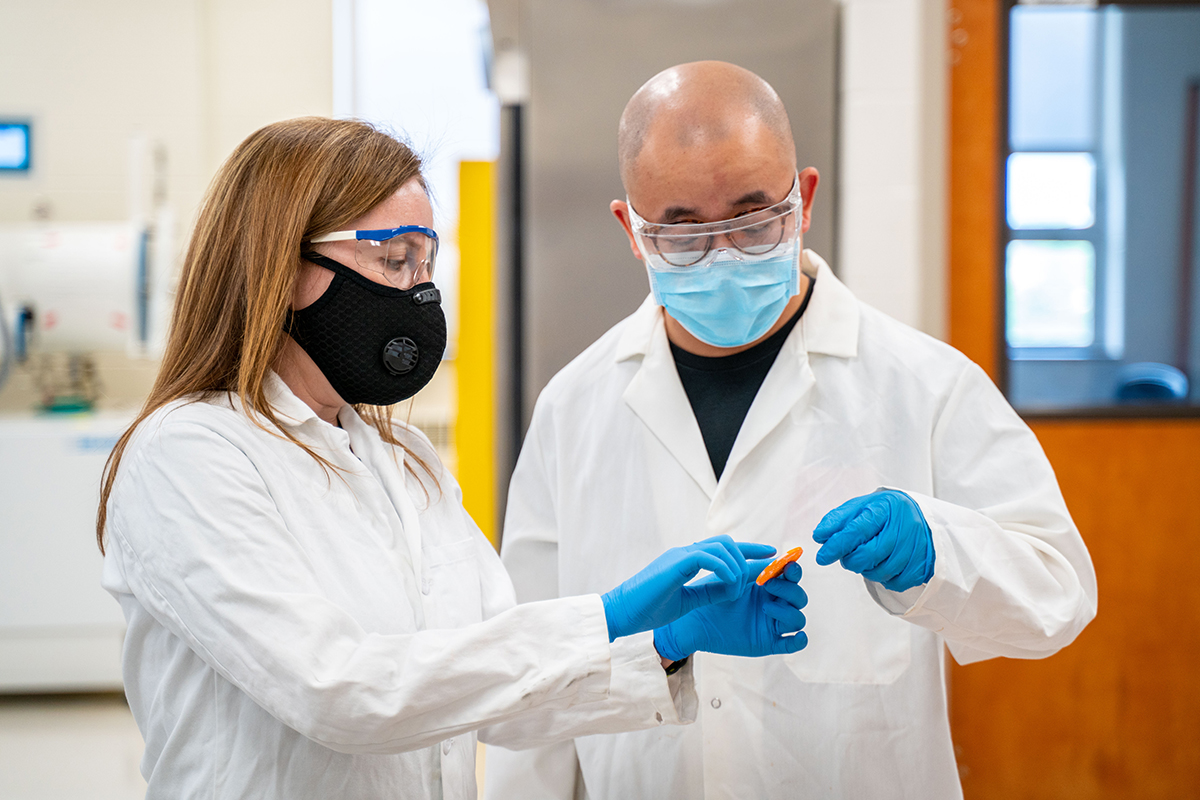
Escobar worked to perfect fusing her filter to the discs Wooldridge sent. These filters are bio-derived meaning they will be safe for both humans and the environment. Her membrane filter is cast and bound to the 3D printed discs, which will also be produced with optimal sustainability in mind. Wooldridge says the sustainability and durability for the 3D discs, like everything else, lies in “the material choice that you make.”
At the time of this writing, Escobar was working with the second batch for testing. The first batch had good results but “we learned some things,” about the design, Wooldridge said, and they will continue to tweak and make adjustments until they get the disc porosity right.
From there, production is straightforward. The disc itself is the crucial component, but that’s just the beginning. Wooldridge intends on 3D-printing the entire mask or make the disc adaptable for existing masks.
From Mask Filters to Ventilation Systems
The need for PPE is real and right now, while Wooldridge and other manufacturers work to bolster that supply chain and get innovations such as Escobar’s filter to market, Wooldridge is already planning for the next emergency.
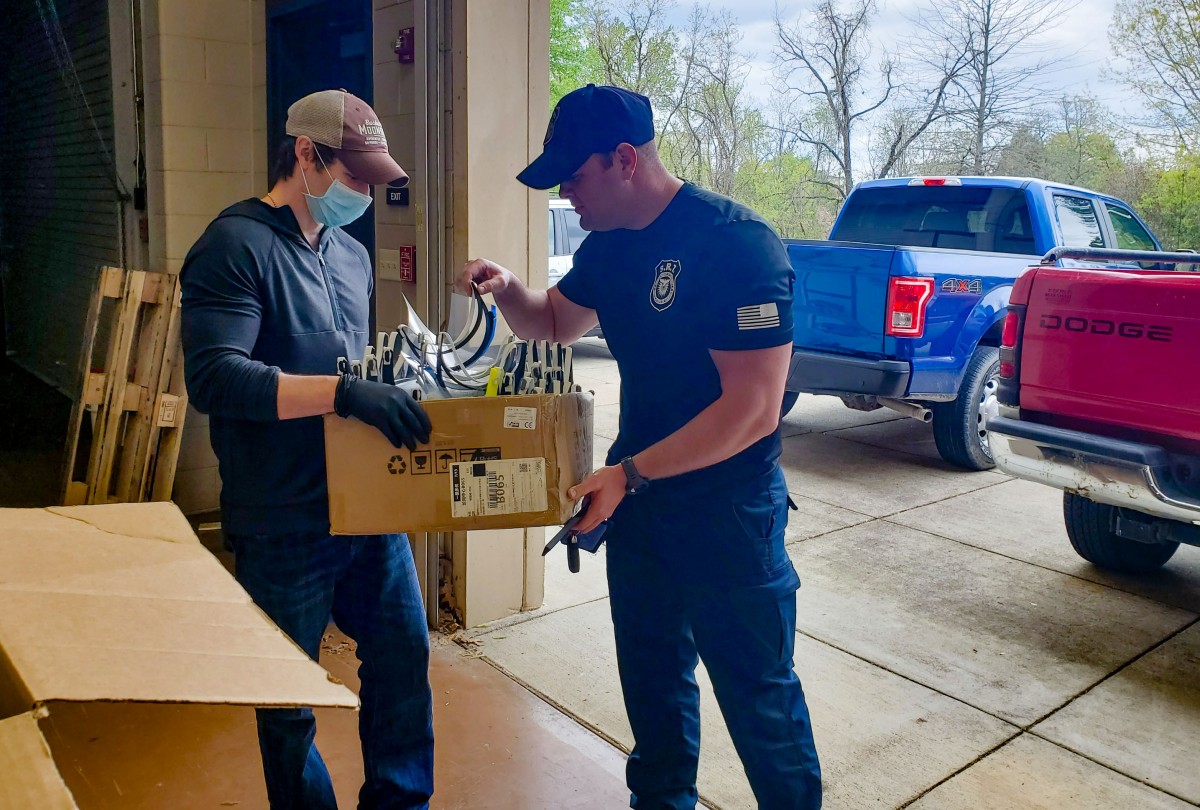
He received funding through the Rapid Response Additive Manufacturing Initiative to train and equip 4-6 more community colleges in Kentucky through his SCC Additives Certificate program. Right now, his is the first and only additives manufacturing certificate program in the state.
Beyond the certificate, community colleges must also be capable of producing on demand. Part of the grant requires a mock emergency drill twice a year, like simulating a supply chain break-down and expecting Kentucky’s community colleges to respond with solutions in their additives lab.
“Right now, 3D printing is being looked at because it is an incredible stop-gap solution and it can respond,” Woolridge said.
Escobar also has her sights on the future by thinking beyond the mask. She aims to apply her innovative filter to ventilation systems that clean the air in buildings, such as factories and hospitals.
“If we could put those in every hospital room, then the air coming into the room and going out, would become a lot safer — that’s the ultimate pie-in-the-sky goal,” she said.
That technology is not too far-fetched.
“To go a little bit further, she’s absolutely right,” Wooldridge said.
He is confident he could scale up the filter disc into a ductwork insert, for example, and have a filtration system built into every single duct, if needed.
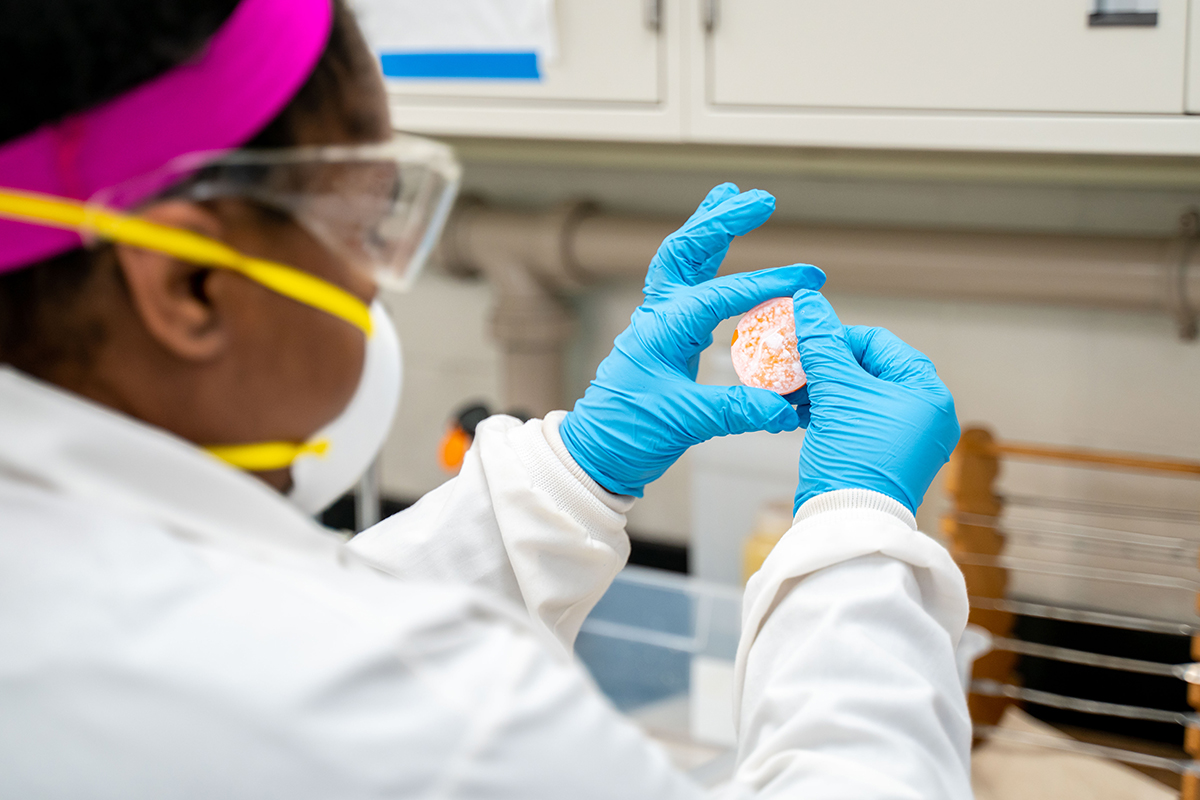
The flexibility and adaptability with 3D-printing is what Wooldridge has been trying to impress upon tradesmen. Additive manufacturing has applications in everything from HVAC to plumbing to biomedical technology. Attach a certificate in additives to any of your two or four-year trades degrees, Wooldridge said, and “you will blow your boss’s mind with what you can do.”
Escobar says this technology already impresses her.
“You have a four-year institution, a land grant institution, a very respected institution with the University of Kentucky, and this research would 100 percent not be possible, viable, or doable, without the intellectual contribution that’s coming from Eric Wooldridge and Somerset Community College.”
Bonnie Jean Feldkamp is an award-winning freelance writer, columnist and op-ed contributor. She is the Communications Director for the National Society of Newspaper Columnists, member of the Cincinnati Enquirer Editorial Board and a board member for the Cincinnati Chapter of the Society of Professional Journalists. She lives with her family in Northern Kentucky. Find her on social media @WriterBonnie or at WriterBonnie.com.


